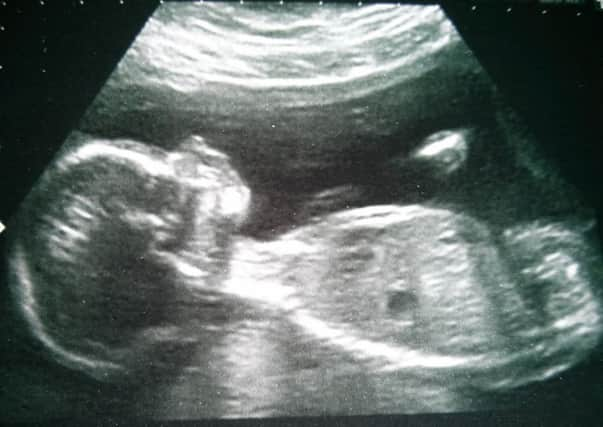Emily Murtagh: Preserving life is key to abortion debate


Given that abortion laws have now been devolved to the Scottish parliament with the Scotland Act 2016, it would seem that a brief overview of the history of abortion in Scotland would prove quite useful and maybe even enlightening. This is especially the case since the bill that led to the 1967 Abortion Act which legalised abortion in England, Scotland and Wales (but not Northern Ireland) was brought to the UK parliament by a Scottish MP, David Steel.
So what was the practice in Scotland up until 1967 and how did it compare to other parts of the UK? It might be easy to presume that, historically, England and Scotland had similar abortion laws, but this was not the case.
Advertisement
Hide AdAdvertisement
Hide AdUntil 1967, abortion in England, Wales and Northern Ireland (but not Scotland) was illegal under the Offences Against the Person Act of 1861 which stated that “whosoever, with intent to procure the miscarriage of any woman, whether she be or be not with child, shall unlawfully administer to her or cause to be taken by her any poison or other noxious thing, or shall unlawfully use any instrument or other means whatsoever with the like intent, shall be guilty of felony”.
In 1929, because questions remained about whether the law protected the child during birth, the Infant Life (Preservation) Act of 1929 was enacted but only for England and Wales (and not for Scotland and Northern Ireland). This prohibited the destruction of any child capable of being born alive, which at the time meant after about 28 weeks.
But, as indicated, these earlier laws did not cover Scotland where abortion was viewed, before 1967, as a common law offence without strictly defined limits. In practice, it was characterised in terms of professional autonomy of doctors. If abortion was undertaken, it was performed when these physicians believed they were acting in good faith and, for the most part, when there was a serious risk to the life of the mother. It was rare for charges to be brought, because of the shared interest of all involved in preventing this from happening.
Most criminal prosecutions that were brought were against those who were not qualified doctors and/or those who performed the procedures for financial gain. There were only twenty such cases in Scotland in the five years leading up to the 1967 Act. Although figures on backstreet abortions vary largely across different sources, the practice was something all involved wanted to prevent.
Two key figures in two Scottish cities are also helpful in illuminating the medical, political and social context in which the 1967 Act was brought into being. Their contrasting value systems representing, in an appropriate way, the two sides of the question. These are Aberdeen-based gynaecologist Professor Sir Dugald Baird (1899 – 1986) and Professor of Midwifery at Glasgow University, Ian Donald (1910 – 1987), who was also a practising Protestant.
In this period, both cities were in the grips of widespread unemployment and poverty as well as inadequate housing. However, despite their economically similar contexts, on the issue of abortion they differed greatly. Donald was based in Glasgow, the city in Scotland with the strongest anti-abortion sentiment. This was also the conviction of many of the leading obstetricians in the city at the time. Aberdeen, on the other hand, appeared to be a far more liberal environment. The disparity between the two cities was significant. Donald claimed, in 1966, that in Glasgow an abortion was carried out in just one in every 3,750 pregnancies, while in Aberdeen it was 1 in every 50.
Donald was the inventor of the modern ultrasound, and used his technology as a means to educate women on the development of their foetus and to try and encourage them not to choose an abortion. Baird, on the other hand, became increasingly vocal on abortion. He presented it as part of the ‘fifth freedom’; in other words, ‘the freedom from the tyranny of excessive fertility’. He became influential to MP David Steel and was central to the founding of the Abortion Legislation Reform Association, while Donald took part in establishing the Society for the Prevention of the Unborn Child.
Eventually, the Abortion Act 1967 became law enabling a liberalisation of abortions to take place across the UK, including Scotland. However, the legal and ethical questions have rolled on since then, and it would seem they will continue to do so.
Advertisement
Hide AdAdvertisement
Hide AdWhile conversations around abortion often dissolve into the vitriolic, the desire to preserve life and to alleviate human suffering was evident in the convictions of many who contributed to the history of this question. Hopefully these noble aims will remain central to the discourse.
• Emily Murtagh is a research associate with the Scottish Council on Human Bioethics